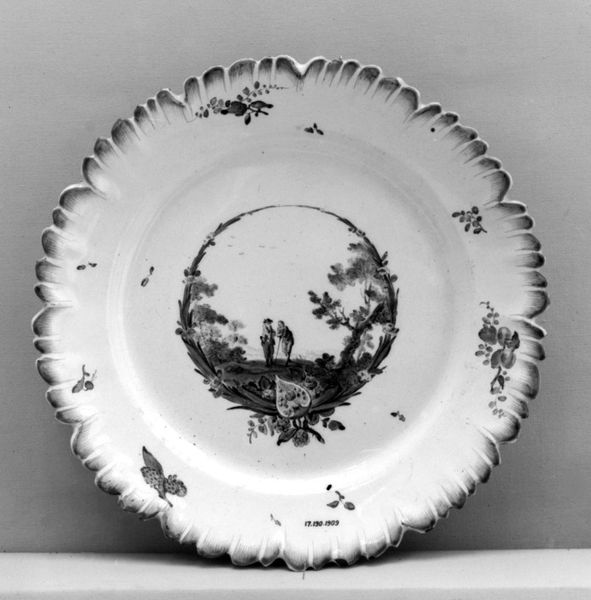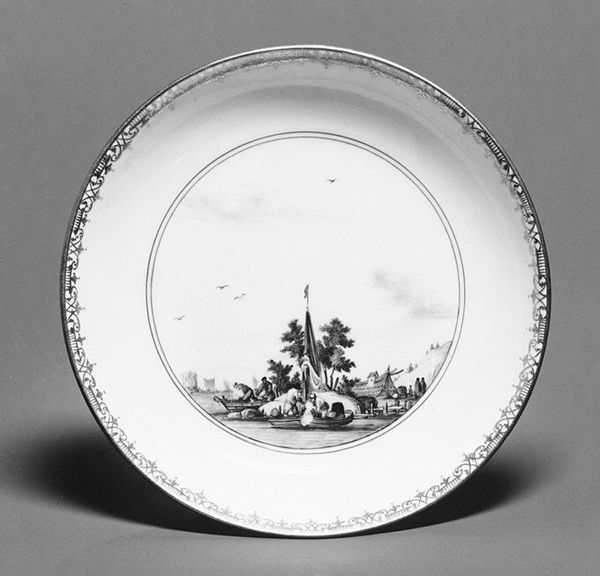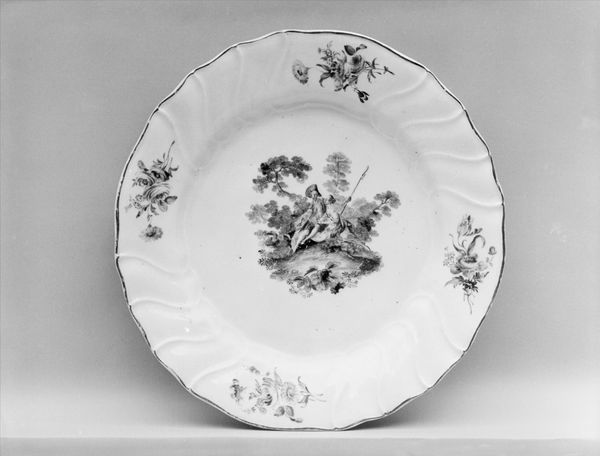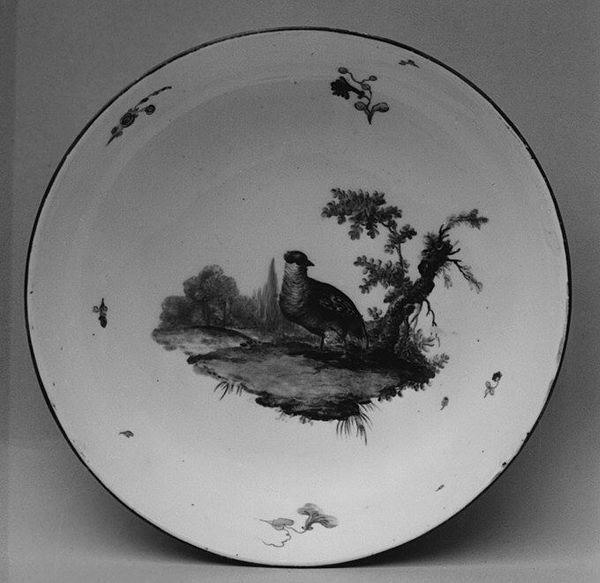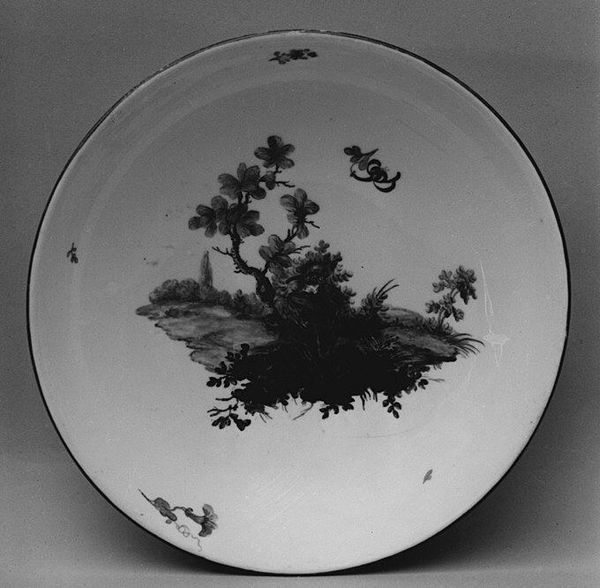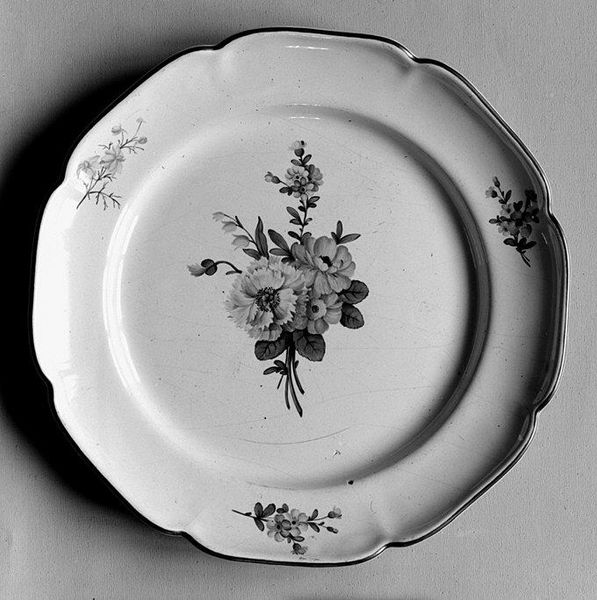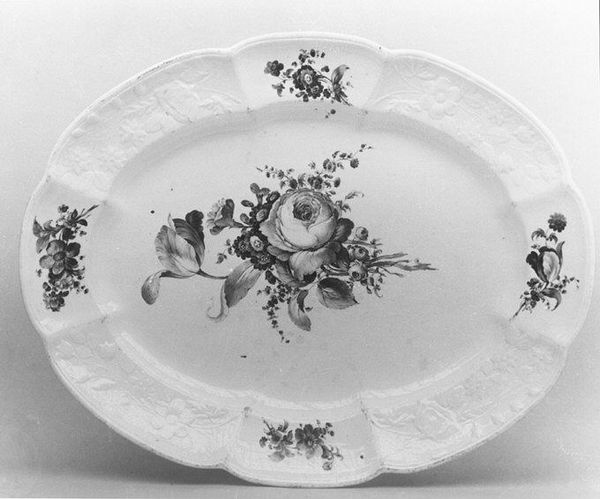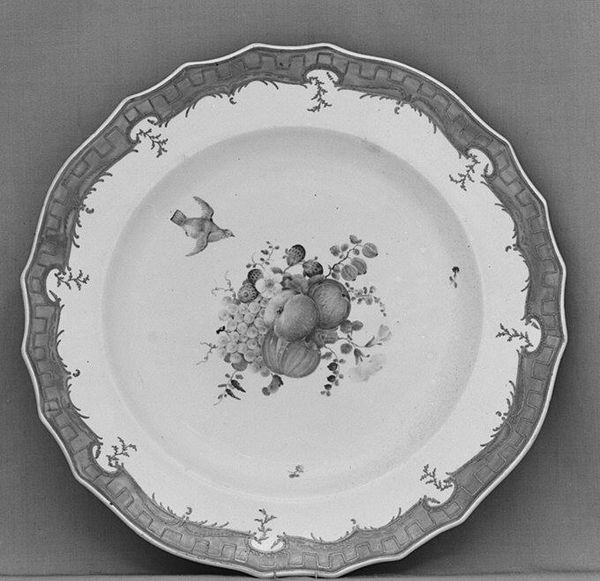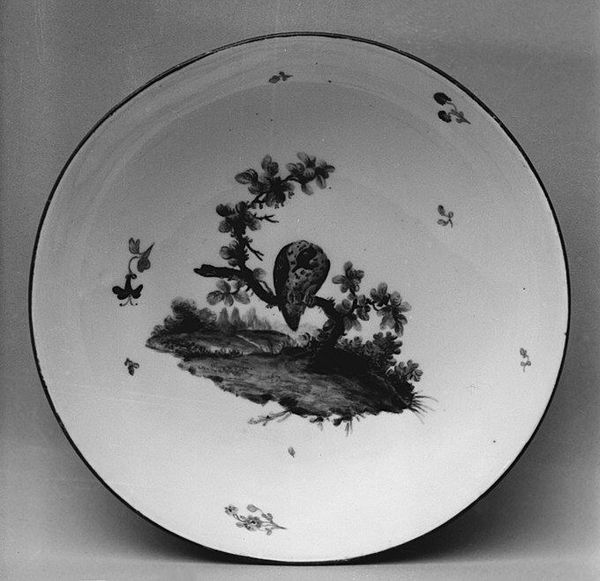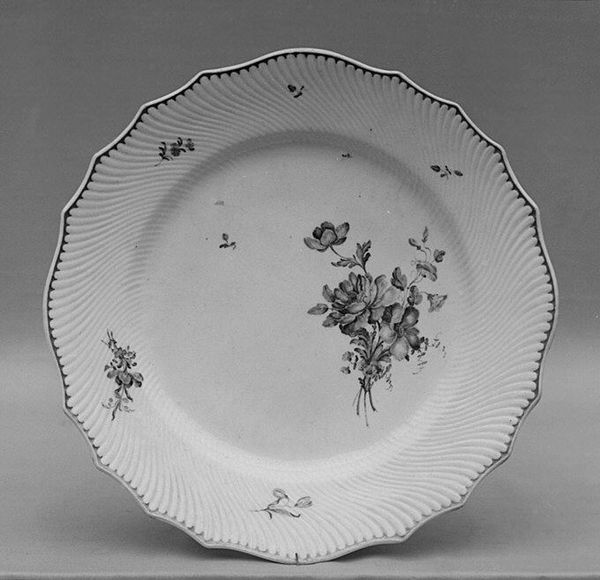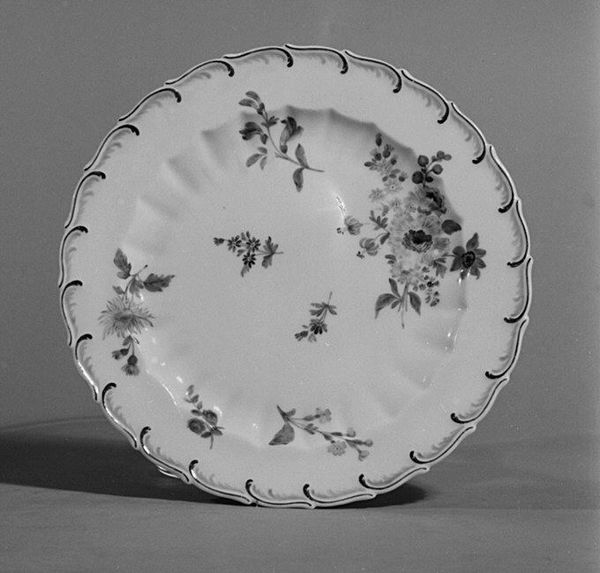
Dimensions: Diameter: 9 1/8 in. (23.2 cm)
Copyright: Public Domain
Editor: Here we have a ceramic plate made sometime between 1753 and 1795. It's simply titled "Plate," and is attributed to Fidelle Duvivier. I'm struck by the delicacy of the central image – the way the landscape is painted within the circular frame on the plate itself. It feels like a contained world. What do you see in terms of its composition? Curator: The primary appeal resides within its formal arrangement. Note how Duvivier manipulates the circular format to frame a miniature landscape. This contrasts elegantly with the Rococo style of floral painting along the perimeter, an interplay that demonstrates mastery of both genre and technique. Is there a discernible tension between the landscape and the objecthood of the plate? Editor: I see what you mean – there's the central painted landscape, which then coexists with the plate's functional purpose, creating a kind of visual paradox. Does this tension affect its meaning? Curator: The tension enriches the piece's semiotic range, where representation meets objecthood, elevating it from mere utilitarian craft to artwork. Look carefully at how Duvivier guides the gaze from one point to another using compositional features, thus rewarding repeated visual inspection. Do you observe how the floral perimeter softens the geometric rigidity of the plate itself? Editor: It does. The curvature creates an illusion of constant visual unfolding and it avoids being overly rigid. The edge treatment certainly adds to its charm! Curator: Precisely. What have you taken from our close analysis? Editor: That formalism opens avenues to see works not only as representations but as constructions; that aesthetic pleasure emerges from structure and details! Thank you. Curator: Indeed! A valuable method when approaching artwork.
Comments
No comments
Be the first to comment and join the conversation on the ultimate creative platform.
